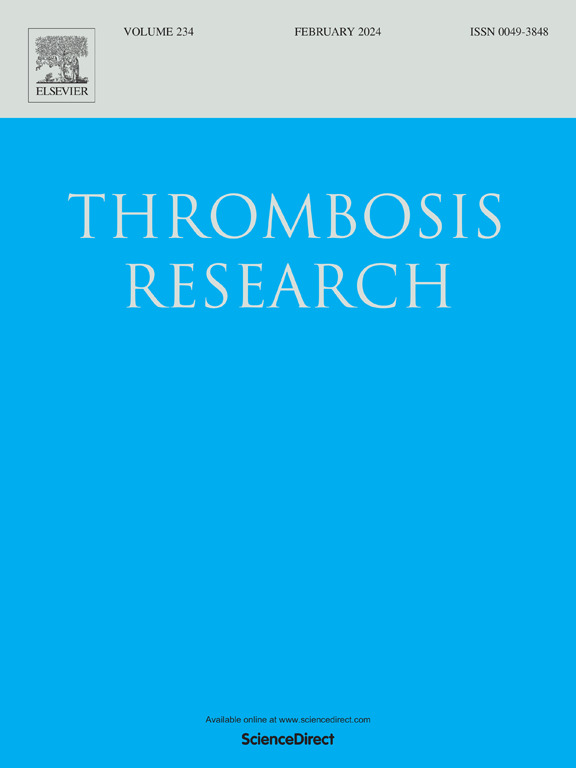The effect of exercise-based rehabilitation on objective physical activity levels in patients with persistent dyspnoea following pulmonary embolism
IF 3.4
3区 医学
Q1 HEMATOLOGY
引用次数: 0
Abstract
Background
Rehabilitation improves exercise capacity following pulmonary embolism (PE), but it is unclear whether this improvement is transferred into increased physical activity.
Objectives.
To explore the effect of exercise-based rehabilitation on objective measures of physical activity in patients with persistent dyspnoea following PE compared to standard care.
Methods
This pre-planned substudy compared an eight-week exercise-based rehabilitation program to usual care. Number of steps per day and time spent in sedentary, low, moderate and vigorous physical activity (in number of metabolic equivalent of tasks) were measured for seven consecutive days at baseline prior to intervention start and at post-intervention using accelerometery. Data were analysed with a mixed-effect generalised linear model.
Results
Complete data was provided by 48 patients at both timepoints (mean age 58 years, 54 % men) with 54 % randomised to rehabilitation. There were no significant differences between groups at baseline. The majority of time (717 min per day) was spent in sedentary activity and mean number of steps per day was 6701. At post-intervention, there were no significant differences between groups in any of the objectively measured physical activity parameters (p > 0.05).
Conclusion
In this cohort, exercise-based rehabilitation following PE did not change daily physical activity levels compared to usual care control group.
运动康复对肺栓塞后持续性呼吸困难患者客观体力活动水平的影响
背景:康复治疗可以改善肺栓塞(PE)患者的运动能力,但目前尚不清楚这种改善是否会转化为增加身体活动。目的:与标准治疗相比,探讨运动康复对肺栓塞后持续性呼吸困难患者身体活动客观测量的影响。方法:这项预先计划的亚研究将为期八周的基于运动的康复计划与常规护理进行了比较。在干预开始前和干预后使用加速计连续7天测量每天的步数和静坐、低、中、高强度身体活动的时间(以代谢当量的任务数量计算)。数据分析采用混合效应广义线性模型。结果48例患者在两个时间点提供了完整的数据(平均年龄58岁,男性占54%),其中54%随机接受康复治疗。两组在基线时无显著差异。大部分时间(每天717分钟)花在久坐活动上,平均每天走6701步。在干预后,两组之间在任何客观测量的身体活动参数(p >;0.05)。结论在这个队列中,与常规护理对照组相比,体育锻炼后基于运动的康复没有改变日常身体活动水平。
本文章由计算机程序翻译,如有差异,请以英文原文为准。
求助全文
约1分钟内获得全文
求助全文
来源期刊

Thrombosis research
医学-外周血管病
CiteScore
14.60
自引率
4.00%
发文量
364
审稿时长
31 days
期刊介绍:
Thrombosis Research is an international journal dedicated to the swift dissemination of new information on thrombosis, hemostasis, and vascular biology, aimed at advancing both science and clinical care. The journal publishes peer-reviewed original research, reviews, editorials, opinions, and critiques, covering both basic and clinical studies. Priority is given to research that promises novel approaches in the diagnosis, therapy, prognosis, and prevention of thrombotic and hemorrhagic diseases.
 求助内容:
求助内容: 应助结果提醒方式:
应助结果提醒方式:


